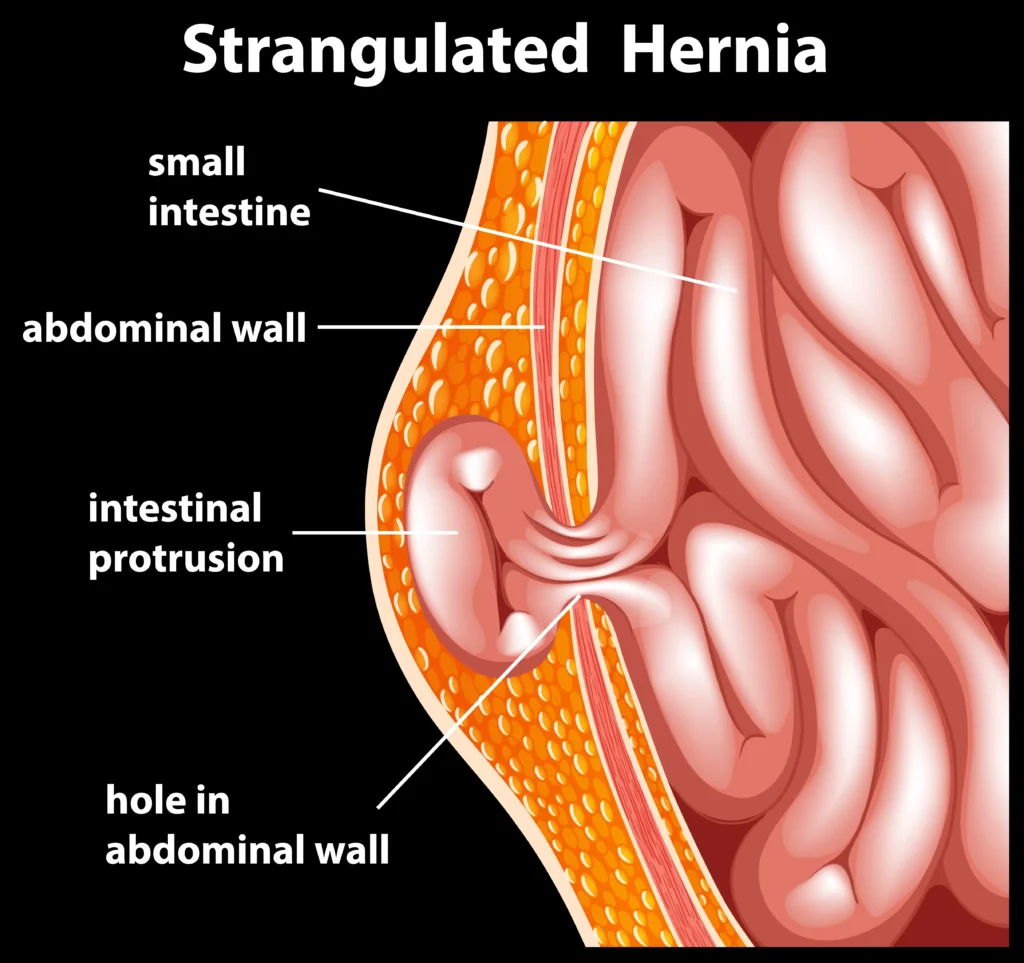Direct and Indirect Hernia - Differences, Symptoms, and Treatment
Hernias are a common medical condition that can occur when an organ or tissue pushes through a weak spot in the muscles or surrounding tissue. Among the various types of hernias, direct and indirect hernia are two forms that affect the groin area. Understanding the differences between these types, their causes, symptoms, and available treatments is important for early detection and prevention of complications.
What Is a Hernia?
A hernia develops when an organ, often part of the intestine, pushes through a weak spot in the muscles or connective tissue, leading to a visible bulge or discomfort. Hernias can occur in various parts of the body, but inguinal (groin) hernias are the most common type. Inguinal hernias themselves are categorized into direct and indirect hernia based on how they form and where they occur in relation to the abdominal wall.
Understanding Direct and Indirect Hernias
Direct Hernia:
A direct hernia occurs when the tissue pushes directly through a weak spot in the abdominal wall muscles, typically in the inguinal (groin) region. This type of hernia is most commonly seen in adults, particularly men, and is often linked to muscle weakness that develops over time. Direct hernias are usually located near the inguinal canal but do not pass through it.
Indirect Hernia:
An indirect hernia is congenital, meaning it often develops due to a defect present at birth. It occurs when tissue, such as part of the intestine, protrudes through the inguinal canal, a natural passageway in the groin area. Indirect hernias are more common in men, but women and children can also be affected. Unlike direct hernias, indirect hernias can pass into the scrotum or labia.

Causes of Direct and Indirect Hernias
The causes of direct and indirect hernia vary depending on factors like age, physical activity, and genetics.
Causes of Direct Hernia:
- Muscle Weakness: Over time, the abdominal muscles can weaken due to age or strain, making it easier for tissue to push through.
- Chronic Strain: Repeated activities that increase pressure on the abdomen, such as lifting heavy objects, coughing, or straining during bowel movements, can contribute to the development of direct hernias.
- Obesity: Excess weight can put strain on the abdominal muscles, increasing the likelihood of hernias.
Causes of Indirect Hernia:
- Congenital Defect: Indirect hernias are often caused by a failure of the inguinal canal to close properly during fetal development, leaving an opening through which tissue can protrude.
- Genetics: A family history of hernias can increase the risk of developing an indirect hernia.
- Gender: Men are more likely to develop indirect hernias due to the structure of the male inguinal canal.
Symptoms of Direct and Indirect Hernias
The symptoms of both direct and indirect hernias can be similar, but there are subtle differences based on their location and severity.
Common Symptoms of Direct Hernia:
- A noticeable bulge: One of the most obvious symptoms is a bulge or lump in the groin area, which may become more prominent when standing, coughing, or lifting heavy objects.
- Discomfort or pain: Direct hernias often cause mild discomfort or pain in the groin, especially when engaging in physical activities or straining the abdominal muscles.
- Reduced symptoms when lying down: The bulge or discomfort may lessen when lying down, as the tissue may move back into place.
Common Symptoms of Indirect Hernia:
- A bulge extending into the scrotum or labia: In men, an indirect hernia may cause a bulge that extends into the scrotum, while in women, it may protrude into the labia.
- Pain or pressure in the groin: Similar to direct hernias, indirect hernias may cause discomfort or a feeling of heaviness in the groin area.
- Bowel obstruction: In severe cases, indirect hernias can lead to bowel obstruction, causing symptoms like nausea, vomiting, and difficulty passing stool.
Diagnosis of Direct and Indirect Hernias
Diagnosing direct and indirect hernia typically involves a physical examination by a healthcare provider. During the exam, the doctor may ask you to stand and cough, as this can make the hernia more visible. In some cases, imaging tests such as ultrasounds, CT scans, or MRIs may be used to confirm the diagnosis and determine the severity of the hernia.
Treatment Options for Hernias
Both direct and indirect hernias generally require treatment to prevent complications such as strangulation, where the blood supply to the herniated tissue is cut off. Treatment options may include lifestyle changes, non-surgical management, or surgical intervention.
Non-Surgical Treatment:
- Watchful Waiting: In cases where the hernia is small and not causing significant discomfort, a doctor may recommend watchful waiting. This involves monitoring the hernia to see if it worsens over time.
Surgical Treatment:
Hernia Repair Surgery: Most hernias, especially those that cause symptoms or pose a risk of complications, are treated with surgery. The two main surgical approaches include:
- Open Hernia Repair: This traditional method involves making an incision near the hernia, pushing the tissue back into place, and reinforcing the muscle wall with stitches or mesh.
- Laparoscopic Surgery: A minimally invasive approach, laparoscopic surgery uses small incisions and a camera to repair the hernia. This technique usually leads to less scarring and a quicker recovery.
Emergency Surgery: If the hernia becomes strangulated or obstructed, emergency surgery is required to restore blood flow and repair the hernia.
Prevention Tips for Hernias
While not all hernias can be prevented, especially congenital indirect hernias, there are steps you can take to reduce the risk of developing a hernia or preventing an existing one from worsening:
- Maintain a Healthy Weight: Excess body weight puts strain on the abdominal muscles, increasing the risk of hernias. Weight management techniques include eating a balanced diet and exercising frequently.
- Avoid Heavy Lifting: Lifting heavy objects improperly can cause or worsen hernias. If you must lift, use your legs instead of your back and avoid putting too much strain on your abdomen.
- Strengthen Abdominal Muscles: Exercises that strengthen the core muscles can help prevent hernias by providing better support to the abdominal wall.
- Treat Chronic Coughing: Chronic coughing increases abdominal pressure, so managing conditions that cause persistent coughing, such as asthma or smoking, can reduce hernia risk.
When to Consult a Doctor
It’s important to seek medical advice if you suspect a direct or indirect hernia, especially if you notice a bulge or feel discomfort in your groin area. Early diagnosis and treatment can prevent complications like strangulation, which is a medical emergency requiring immediate surgery.
Conclusion
Understanding the differences between direct and indirect hernia is crucial for early detection and appropriate treatment. While direct hernias often develop due to muscle weakness over time, indirect hernias are typically congenital. Both types can cause similar symptoms, but timely diagnosis and surgical intervention can lead to a successful recovery. If you suspect you have a hernia, consult a healthcare professional for a thorough evaluation and guidance on the best course of treatment.
For expert advice and personalized treatment options, visit Dr. Sushma Peruri’s clinic, where advanced care is provided for all types of hernias.


